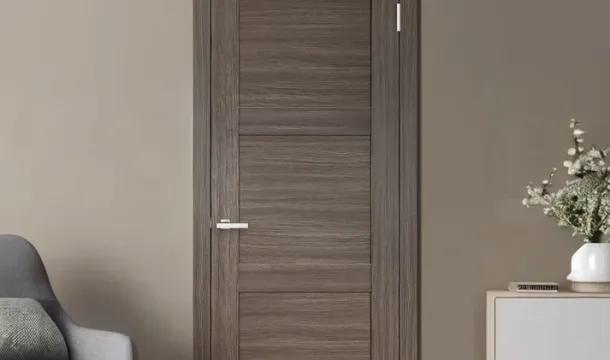Fire Rated Interior Doors Requirements and Standards in Canada
Popular Articles
Selecting doors with certified fire resistance is mandatory to ensure compliance with national safety regulations. These barriers must demonstrate proven durability under high-temperature conditions, utilizing specialized materials such as gypsum cores, mineral composites, and intumescent seals. Proper insulation properties are critical to prevent heat transfer and maintain compartmentalization during emergencies.
Certification processes in Canada require rigorous testing aligned with CAN/ULC standards, including ULC-S104 and CAN4-S115 benchmarks. Compliance guarantees that the products meet minimum thresholds for flame penetration, smoke leakage, and structural integrity over designated time intervals?€"commonly 20, 45, 60, or 90 minutes. Manufacturers provide detailed documentation confirming adherence to these parameters.
Installation practices also influence overall performance; correct fitting ensures that gaps around the frame do not compromise protection levels. Regular inspection and maintenance uphold the longevity and effectiveness of these protective openings. Understanding the interplay between materials selection, insulation capability, regulatory mandates, and certification helps homeowners and designers make informed decisions that prioritize both safety and functional durability within Canadian buildings.
Canadian Fire Door Ratings Explained
Ensure compliance by selecting doors with clearly marked certification labels indicating their resistance duration, commonly 20, 45, 60, or 90 minutes. These ratings reflect the door?€(TM)s capacity to withstand heat and prevent flame passage under standardized testing protocols established by Canadian safety regulations.
Key Elements Defining Door Resistance Levels
- Materials: Doors constructed from gypsum cores, mineral cores, or steel provide varying degrees of insulation and durability. Mineral core assemblies typically offer superior fireproof properties.
- Insulation Quality: High-performance insulating layers limit temperature rise on the non-exposed side, crucial for protecting occupants and structural elements during an emergency.
- Installation Precision: Proper fitting with approved frames, gasketing, and hardware maintains the integrity of the protective barrier; improper installation can void certification and compromise safety.
Certification & Compliance Considerations
- Canadian Regulations: Adherence to CAN/ULC S104 testing standards is mandatory for official approval. Verify that products carry labels from recognized certification bodies such as UL or Intertek.
- Label Verification: Confirm the presence of a permanently affixed label detailing rating duration, manufacturer information, and applicable test standards before procurement.
- Maintenance & Inspection: Routine checks ensure seals remain intact and no modifications undermine the initial certification. Any alterations require re-certification to maintain regulatory compliance.
Selecting assemblies aligned with these parameters guarantees a fireproof environment in accordance with Canadian legislative frameworks, optimizing both occupant safety and property protection through reliable passive defense solutions.
Building Code Compliance Criteria
Compliance with building codes mandates the use of certified components that meet specified performance metrics for containment and insulation. Materials selected must possess proven resistance to heat transfer and structural degradation under exposure conditions defined by local regulations. Certification from accredited testing agencies, such as UL or Intertek, is required to verify adherence to these benchmarks.
Installation procedures must align strictly with manufacturer guidelines and jurisdictional mandates to maintain the integrity of the protective barrier. This includes proper fitting within frames designed to accommodate expansion and contraction without compromising seals or gaps. Use of approved hardware and firestopping materials ensures continuous protection along perimeters.
Documentation demonstrating compliance?€"such as inspection reports, certification labels, and installation records?€"should be maintained for verification during audits. Insulation properties, including thermal conductivity ratings, play a critical role in meeting energy efficiency criteria alongside safety objectives outlined in the code.
Regulatory frameworks often specify minimum performance classifications based on occupancy type and building height, necessitating selection tailored to these parameters. Regular training for installers on evolving standards enhances overall system reliability and reduces risk of non-compliance due to improper assembly or material substitution.
Installation Rules for Fire-Resistant Interior Openings
Ensure that all openings comply strictly with manufacturer instructions and applicable regulations to maintain certification integrity. Proper framing must accommodate the specified thickness and insulation materials, avoiding gaps that could compromise fireproofing performance.
Use non-combustible anchors and fasteners rated for durability under high temperatures. The installation frame should be constructed from approved materials compatible with the door assembly to prevent warping or deformation during exposure to heat.
Seal all perimeter joints with certified intumescent seals or appropriate fire-resistant caulking to preserve insulation continuity. This step is critical for sustaining compartmentalization and preventing smoke infiltration.
Hardware such as hinges, closers, and locks must meet established standards and be installed according to tested configurations. Improper fitting or substitution with non-certified components can void safety certification and reduce overall effectiveness.
Confirm that clearances between the panel edges and frame do not exceed prescribed tolerances; excessive gaps undermine the fire barrier function. Adjustments should be made using suitable shims made from fireproof materials rather than wood or plastic.
Verify full operational functionality of self-closing devices immediately after installation to ensure automatic closure under emergency conditions. Routine testing should be part of maintenance protocols to uphold safety requirements over time.
Inspection and Maintenance Guidelines
Conduct monthly inspections to verify the integrity of seals, hardware, and surface coatings associated with fireproof barriers. Check for gaps exceeding 1/8 inch around the frame, as they compromise insulation and safety performance.
Lubricate hinges, latches, and closers quarterly using non-flammable lubricants to maintain smooth operation without affecting certification. Replace worn or damaged gasketing promptly to preserve durability and thermal resistance.
Ensure that all materials applied during maintenance?€"such as touch-up paints or sealants?€"meet recognized standards for fire protection compliance. Avoid using unauthorized components that could invalidate installation certification.
Avoid modifications such as drilling or cutting into panels post-installation, which can undermine insulation effectiveness and void compliance documentation. Any repair must follow manufacturer guidelines and local code mandates to sustain overall system durability.
Maintain detailed records of all inspections and servicing activities to support ongoing adherence to certification requirements and facilitate audits. Proper upkeep extends lifespan while preserving essential safety functions embedded within the assembly.
Approved Materials and Components
Compliance with established regulations mandates the use of certified components that demonstrate proven fireproof capabilities and high durability. Core materials such as mineral cores, gypsum, and specially treated composite woods must meet industry standards for insulation and structural integrity under extreme heat conditions. Metal reinforcements, typically steel or aluminum alloys, are essential for enhancing resistance without compromising door weight or function.
Door facings should be made from veneer or laminate finishes that have undergone rigorous testing to ensure they do not contribute to flame spread. Intumescent seals, which expand when exposed to heat, are critical components for maintaining airtightness and preventing smoke infiltration. These seals require certification confirming their activation thresholds align with regulatory safety benchmarks.
Material Certification and Traceability
Each element incorporated must come with documentation verifying its compliance with national testing protocols such as those outlined by the Canadian Construction Materials Centre (CCMC). This includes labels indicating compliance with CAN/ULC-S104 or equivalent standards. Traceability of materials from manufacturing through installation is vital for inspection purposes and ongoing safety assurance.
Component Compatibility and Performance
Approved hardware like hinges, latches, and closers must be rated specifically for use in protective assemblies to guarantee operational reliability during emergency scenarios. The integration of these parts influences overall performance; therefore, only manufacturer-recommended kits should be used to preserve certification validity. Proper insulation within the core limits heat transfer while contributing to the assembly?€(TM)s overall fire endurance rating.
Popular Articles

Soundproofing Interior Doors: Which Options Are Best for Your Home?

Choosing the Perfect Interior Doors for Your Canadian Home
